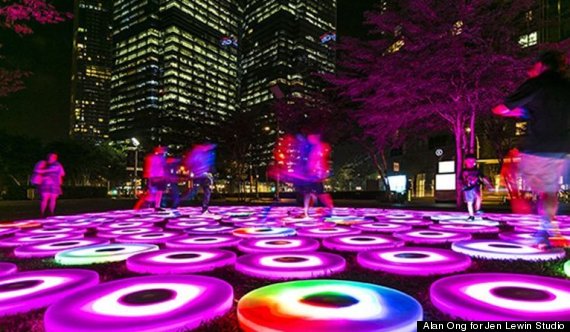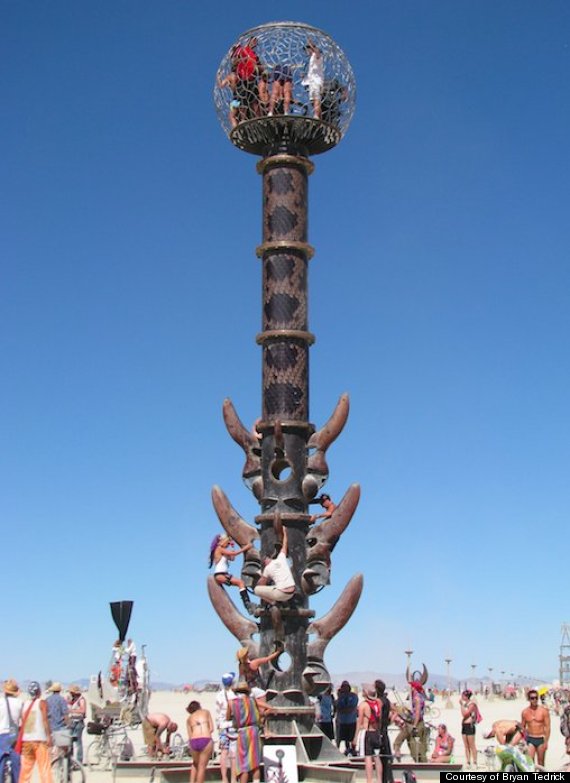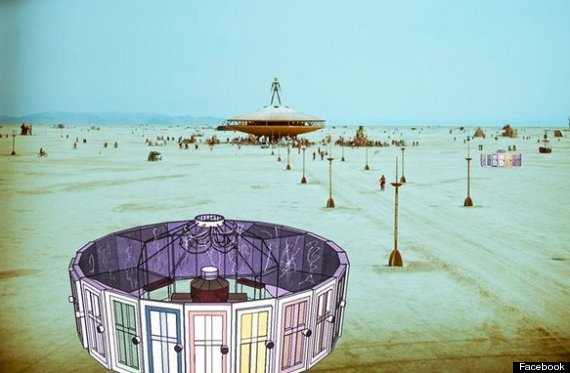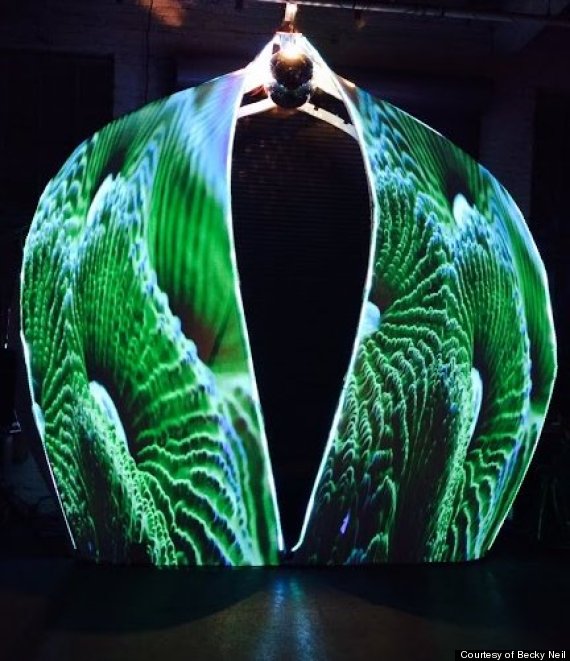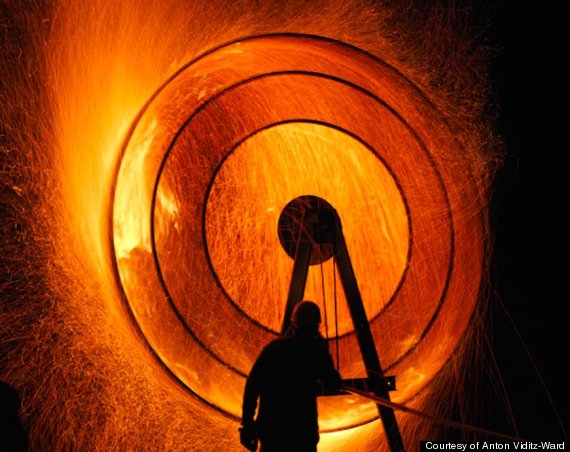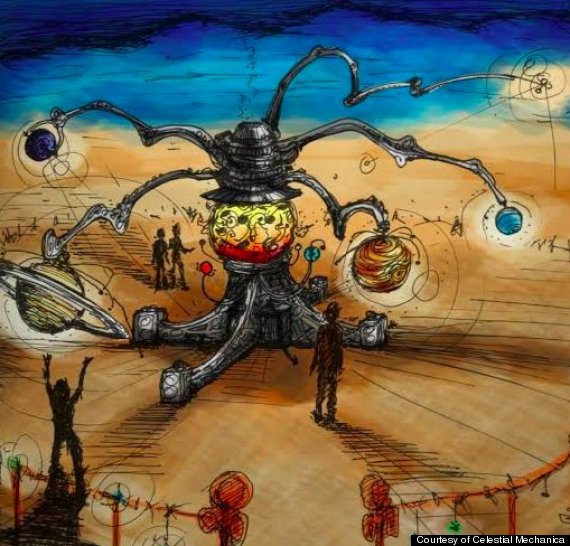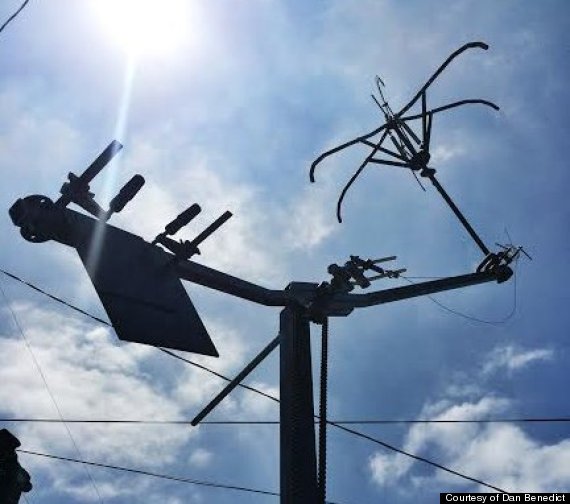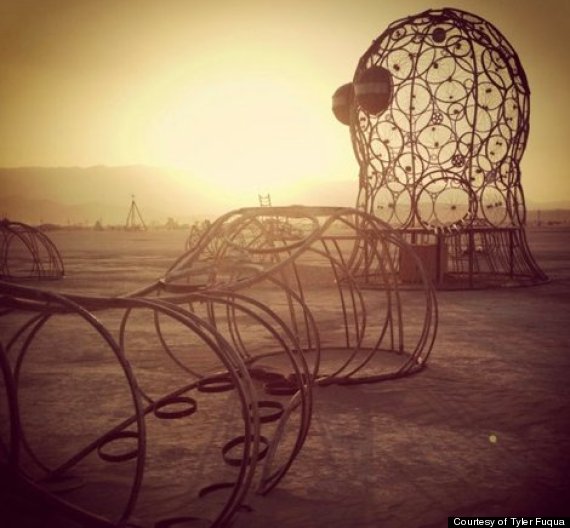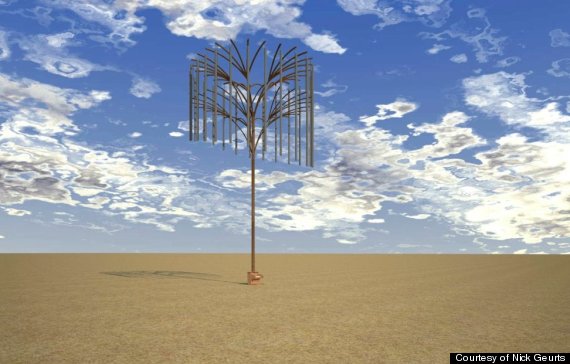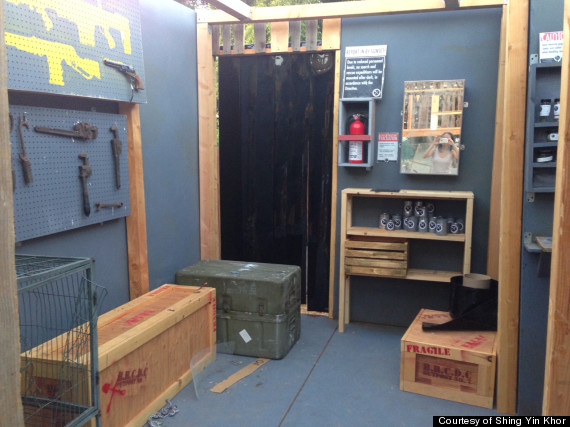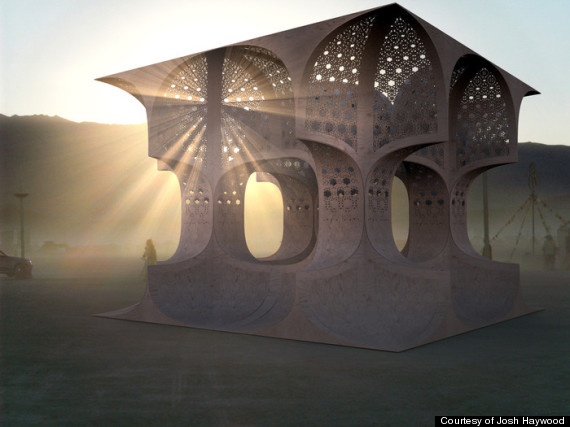Article by
Reddit user 'eaumechant'
So I've been going to the gym for the last couple years - with no real discipline if I'm going to be honest, but I'm not too worried about bulking up or anything - rather, I do it for my mental health. I've been struggling with depressive tendencies for as long as I can remember, and if there's something I've noticed about working out with weights it's that the whole exercise is, in fact, almost entirely mental. The body can always do a lot more than you think it can, and the trick to a really good workout is getting into the right mindset - the hardest thing about lifting with depression is that you're really lifting two things.
So to this end I've been getting into meditation recently - it comes highly recommended from just about any source on mental wellbeing you care to mention and sits next to antidepressants and CBT as one of the most effective treatments for depression currently known. The interesting thing, however, is that a meditative exercise is actually a lot like lifting. To demonstrate, I want to share with you all an exercise I recently did with a group here at the London Buddhist Centre called "Mindfulness of Breathing" - don't worry too much about the Buddhism or the buzzwords - just because something good happens to have come from a religion doesn't mean it's a religious practice (indeed, after all, did we not get Modern Science from the Muslims?).
Try this exercise once a day - before you go to sleep, and you'll sleep better; instead of drinking or smoking and it will help you cut down drinking and smoking; more generally, it will train your mind, giving you greater control of your thoughts, the way training your muscles gives you greater control of your body. All of these factors (sleep, drugs, mindset), as you already know, contribute to making a fitness regime more effective.
Let's Begin
First up you need to find a suitable place to do this - you want as little distraction as possible, quiet and dimly lit, with a chair or a soft floor/mattress against a wall. The position in which you do this is everything: sitting (NOT LYING) with your back straight and your butt flat on something - the best way to do it is in a chair with your feet flat on the floor, but I usually do this on my bed with my back against the wall and my legs loosely crossed with as little weight sitting on my feet as possible - with a small cushion in the small of your back (not essential but I find it makes it easier to keep my back straight) and under your butt if you so desire.
The easiest way to find out how you should be sitting is to slip your hands under your butt and find the two little bony bumps near the tops of your legs. These are your "sit bones" (tuber ischiadicum) and as you rock your upper body back and forth you'll feel them press more or less firmly into your hands. You want these to be as firmly in contact with your seat as possible, so wherever you feel them pressing hardest into your hands, that's how you should sit.
Now take your hands out from under your butt and put them in your lap. It doesn't matter where they are as long as they're still and comfortable - I usually hold them close to my belly, palms up, one inside the other, but they can literally be any way you want them to be, fingers entwined, palms down, one hand on each leg, wherever feels most natural.
Finally, close your eyes.
Warm Up
First thing you're going to need to do is take two deep breaths. Breathe in as deep as you can, hold it, breathe out. Repeat. Simple, and vital. This is analogous to stretching before you work out - it eliminates the initial tension (stiffness) that will hold you back for the rest of the exercise if you don't do it.
Now we're going to do a "body scan" - this is akin to warming up - again, you can skip it if you really want to, but it will make the rest of the exercise a lot easier - this process will simultaneously relax your body and bring your mind into the particular mode/state which makes meditation possible. A body scan goes like this:
- Focus on the sensation in your toes. What do you feel? Perhaps you can feel your socks, the hair on top of your toes, maybe a bit of tingling, the skin of your toes against each other. Focus on this and nothing else. Notice what you feel - don't try to put it into words, don't try to change how it feels, just try to notice.
- Focus on the tops and bottoms of your feet. Same thing - what do you feel? Maybe there's a subtle ache from walking around through the day, some heat. Be receptive. If your feet are flat on the floor pay especial attention to the horizontal surface-to-surface sensation - this is your connection back to the ground, your solidity, your base, and there is a lot of strength here for the mind.
- Heels and ankles, same thing.
- Calves - carry a lot of tension - just feel it, don't try to relax necessarily - the attention itself will do the relaxing for you - tension is a very unconscious thing.
- Shins - maybe you can feel the material of your clothing - if indeed you feel nothing, focus on the lack of sensation itself, the negativity, the absence. It's a curious feeling, isn't it? It's rather strange when you actually notice it.
- Knees - and don't forget the backs of your knees either.
- Thighs - front and back, and as you go up toward your butt you're likely to feel a lot of tension here too (women especially carry a lot of tension in the buttocks) - feel the buttocks flat on the horizontal surface - again, here is your connection back to the base - feel your body heavy on this solidity, almost like you're a part of it (which you are).
- Lower back, and from here up the spine - this is the hardest part of the scan - feel the muscles radiating out of your spine - feel the spine extending all the way from the seat up to the back of the head - it's long! It's really long, and a lot of your muscles connect directly to it - feel all the aches and strains in your back as your focus moves upward (as slowly as it needs to) and outward to your shoulders.
- Down the arms - from the shoulders through the triceps and biceps, the elbows, the forearms and wrists - try to feel each of these muscles individually (a mental ability which, by the by, comes in very handy in the middle of a lift - if you can feel where in your body the lift is actually happening you're more likely to know if you're doing it as you intend it, and to shift the weight accordingly) and the skin on them - linger as long as you need to to register some kind of sensation, whatever it is.
- The hands - like the feet these are complex systems and require some time on their own - the tops and palms of your hands first.
- The fingers - whatever your hands are touching, you'll feel it most in your fingers - there is a lot of sensation here, so take the time to feel each finger individually, the touch of the fingers against each other and against the surface on which they're rested.
- Your belly and chest - there tends to be a knot of tension somewhere in this area - linger on it and feel it ever so slowly loosening - feel your ribs as they move, little by little, inward and outward with your breath - feel your diaphragm expand and contract - feel the tension under your armpits which spreads all the way back to your spine.
- Your neck - like your hands and your feet, your head is a complex area with a lot of muscles and a lot of sensation - and, perhaps more importantly, a LOT of tension - so we're going to do each individual little bit separately - feeel the muscles in your neck radiating toward your chest, your shoulders, your upper back.
- The back of your head and your ears - move your focus slowly up in a band around the back of your head and to the crown - you should be able to feel all the hair on your head (or skin if you've got no hair) - it might help to imagine what it would feel like to be massaged in this area.
- Your forehead - lots of tension here - from the hairline down to the eyebrows.
- The orbits and cheeks - ditto - linger as you need to.
- The nose and lips - you'd be surprised how much tension there is in the top lip and the little bit between your lips and your nose - feel it, let yourself feel it all.
- The jaw - this is the most tense part of most people's bodies - the ideal for meditation is that the jaw should be just slack enough that your teeth aren't touching - this is harder than it sounds.
Easy, right? Now do this twice more. Try to feel each of these parts of your body relax progressively as you repeat the process. It can help to imagine light moving up and over your body as you do this, especially if you imagine this light comes from your belly - a warm, golden orange light - starting as a little ball in your solar plexus/sacrum and expanding out into a ring, then moving down to wrap in around your toes, before proceeding upwards as above.
The Lifts
To recap, you've done 2 x deep breaths + 3 x body scans. You will now do four exercises, analogous for our purposes to lifts - and each will involve a number of sets of ten reps - literally. The aim of these exercises is to focus on your breath. You want to be intensely aware of the sensation of the air moving in and out of your body and the way your body reacts to the air as it comes in, moves about, and then exits - and then, most importantly, that very still period between the breaths when your body is empty. Ultimately you should feel your breath in your whole body - this is why we do the body scan first, so as to bring the sensation of your body to the fore in your mind.
During this time you're going to notice thoughts coming into your consciousness. This is where "meditation" properly speaking happens - the aim is to bring your focus deliberately back to the breath. Make no mistake: you're not trying to suppress your thoughts - rather, what you're trying to do is recognise your thoughts as thoughts (instead of as facts or realities) - these are mental phenomena, and (so the story goes) you do, in fact, have the freedom (if you train yourself) to choose how you respond to their presence in your life.
Every thought process is a train, and your consciousness is a train station - when the train pulls up to the station, you decide whether or not to get on. Much of life's happiness involves getting caught up in a thought train (read up on Flow Psychology for more info) but for the purposes of meditation your aim is not to get onto any of these trains. This is harder than it sounds - much harder - that's why you train.
For the first two exercises (or lifts) we are going to count the reps - 1 to 10 - for one reason and one reason only: the moment you realise you've lost count or stopped counting, that's when you know your attention has deviated - bring your attention back to the breath and start again from 1. Don't be discouraged when this happens - on the contrary, take joy in these moments, for each of these is a little triumph - you'll notice it feels almost kind of uncomfortable to do this deliberate focussing of the attention - this discomfort is analogous to the burn - and indeed when meditation is difficult (like lifting, sometimes it's easy and sometimes it's hard) you will have to dig to bring the attention back to the breath.
How to breathe? Naturally. Don't try to breathe slowly, don't try to hold the breath, just let yourself breathe - indeed what you want to do is notice - the whole aim of meditation is to notice, to watch your body react, to watch with curiosity and receptivity - notice how the breath changes, how the state of the body changes as you breathe and as your breath changes - you might feel your heart beating, you might feel your body temperature dropping - let all of this sensation become as bright and intense as possible - and indeed it can get very intense, sometimes overwhelming - stick with it, try to focus on the positive feelings you have.
Focus always on the breath: the life-giving breath. Imagine the air is fresh and imbuing your body with energy - because, of course, as you'll already know from your reading on fitness, this is in fact what is actually happening. Oxygen is entering your red blood cells, which produce adenosine triphosphate or ATP, whose responsibility it is to transfer the caloric value of whatever nutritional intake you've provided for yourself to the rest of your body - your muscles, your organs, your brain. Remember: there are people in this world who live on 500 calories a day or less - for example, Buddhist monks, whose entire caloric intake is determined by what they can beg - and live to old age in great health. It's the breath that you need before you need anything else: whatever life throws at you, if you can breathe with it, you can be with it. Meditation makes you a hardier person - this is why we do it.
Enough talk!
Let's do it:
- First you're going to focus your attention on the little infinitesimal moment at the end of the exhale - as soon as you notice the breath stop moving, say to yourself in your mind: "1" - repeat, and this time, as soon as you notice the air stop moving: "2" - and so on and so forth. You're going to do three sets of tenreps for the first few weeks of your meditation - as you continue and develop, the time it takes for the distraction to happen grows, and the number of sets increases.
- Same thing again, but this time you're going to focus on the moment the breath starts - the tiny infinitesimal moment just before you inhale - and as soon as you feel the air start to move, say to yourself in your mind: "1" - repeat, and this time, as soon as you notice the air start to move: "2" - and so on up to "10" before beginning again at "1" - repeat this three times.
- At this point you're going to stop counting - but always remember, as soon as you notice yourself getting on a thought train, get off, and get back to the breath. In this exercise you are going to focus on the breath as a whole. The breath is a process - it involves your whole body and it moves in a cycle from beginning to end - feel the breath move through you, feel your body respond to the breath.
- Finally, you are going to focus - again, without counting - on just the place where you first feel the breath. This might be at the end of your nose, where you feel the cool air entering your nostrils; it might be your belly, where you feel your diaphragm drop; it might be your rib cage, where you feel your lungs expanding. These sensations all happen simultaneously, so which one you feel first will change each time you do this meditation, but for each individual meditation pick a spot and stick to it. Do this for as long as you can bear it, always looking out for thought trains.
Finally, cool down - all you need to do is sit, and relinquish control of your thought. Just be still for a moment. Slowly let your eyes open. Notice the room around you. Notice where your thoughts want to go. Let them go. Slowly start moving. Stand up. Stretch. Go forth. Be prosperous.
Best of luck all.
Enjoy this article? Like us on Facebook. We post stories like this all the time:








